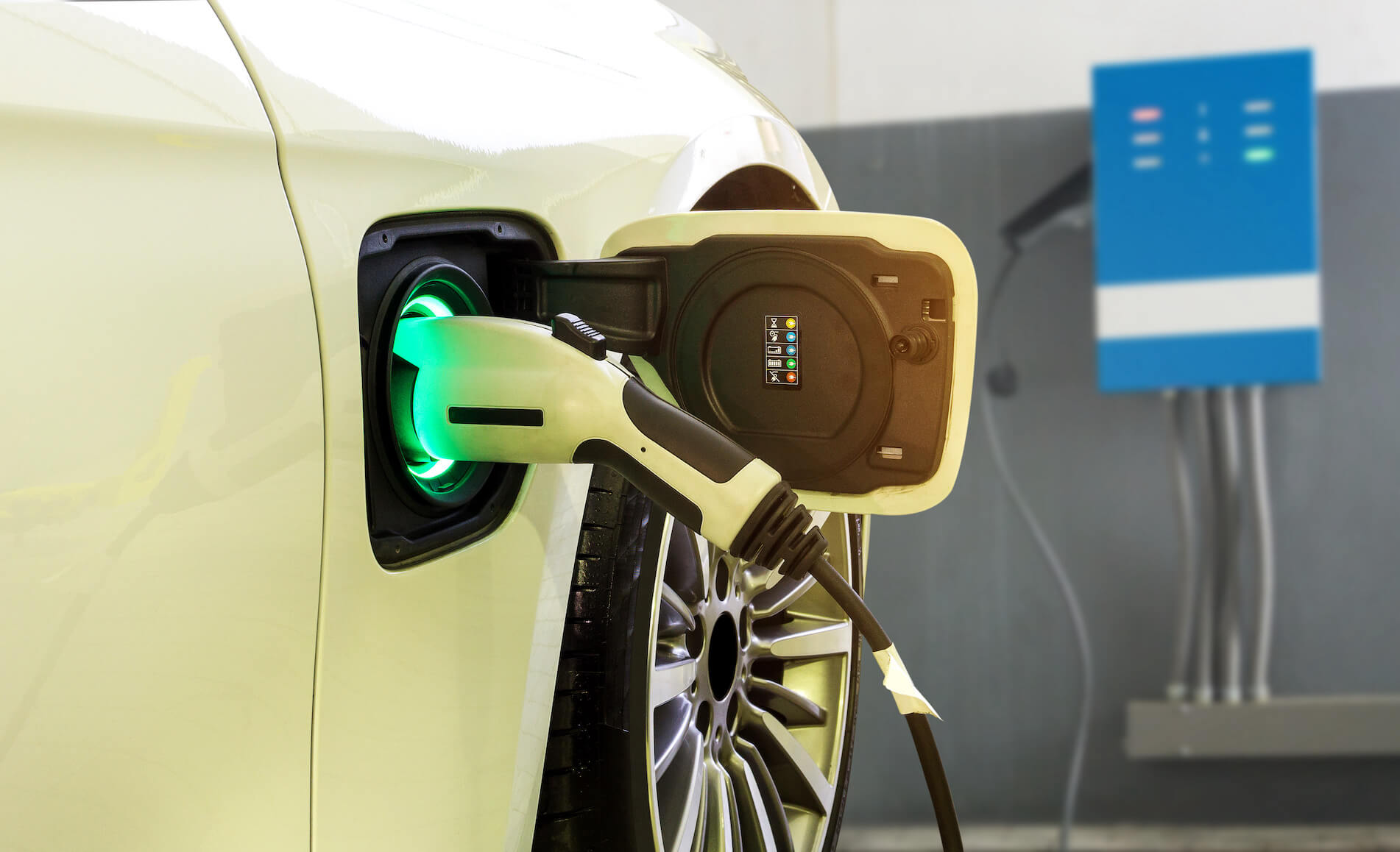Within the last ten years, electric vehicles have come a long way. What has been a new, unusual form of technology at first, has now become a popular, widely known and innovative form of transportation that could help solve omnipresent climate issues and pave the way to a greener, more sustainable way of living. The technology behind electric vehicles has improved significantly, EVs have gotten more affordable and in some cases even are the most rational option from a financial point of view. Public and private players are acknowledging the potential of EVs as well, with governments all around the globe incentivizing electric cars. Audi even announced that from 2026 onwards, they will be producing electric vehicles only, leaving combustion engines in the past. All these trends have aroused the interest of fleet operators wondering how they can integrate EVs into their own fleets and profit from the many benefits that they offer. Does not matter whether your fleet already is electrified to a good extent or if you are just starting to get familiar with EVs, this article will provide you with the most important expertise, both in the advanced aspects of EVs and the basics of them.
What different types of electric cars are there?
An electric vehicle is any vehicle that is powered by electricity at least partially. EVs are divided into three sub-categories:
Fully-electric vehicles
This type of EV is called a BEV (battery electric vehicle) because it is exclusively powered by the electricity from its internal battery, working without any form of combustion engine or fossil fuels. When its battery runs out of energy, it needs to be recharged before it can drive again and is what most people instinctively think of under the term “EV”.
Hybrid electric vehicles
Hybrid EVs differ from battery EVs as they not only run with electricity, but with an additional fuel-powered engine on top. There are two different forms of hybrid EVs: A regular hybrid EV (HEV) and a plug-in hybrid EV (PHEV).
Hybrid EV (HEV)
An HEV gets its energy simultaneously from a gasoline engine and an electric motor. The engine and the motor work together to power the car at the same time. It is important to know that a HEV cannot be charged at a charging station, but instead is constantly charged through regenerative braking. Keep reading to find out more about what regenerative braking is and how it works.
Plug-In Hybrid EV (PHEV)
A PHEV will not tap into your gas tank until the battery runs out of power. Instead of the electric motor and the engine working together at the same time as in the HEV, a plug-in hybrid uses its combustion engine as a backup plan. Unlike an HEV, a plug-in can, as the name suggests, be plugged into a charging station and can be charged without the help of the combustion engine, but still makes use of regenerative braking while driving. A plug-in hybrid EV is perfect for people who drive both within the city but need to travel longer distances as well.
What is regenerative braking?
Every time you use your car brakes, they create friction to slow down the rotation of your wheels. In the process, heat is produced — a form of energy that goes to waste in traditional vehicles. But hybrid and electric vehicles have a way to make use of the energy. When you brake an electric vehicle, the vehicle’s engine switches into reverse mode, allowing for the resulting heat to be converted into energy. That energy then is directed back into the battery of the EV, repowering the car with the energy it harnessed from the braking process. And there you have it: Your car essentially recharged a small portion of its battery all while you were driving it.
The 5 biggest benefits that you can draw from EVs
Introducing EVs to your fleet is not without its challenges. It might help to remember these five
benefits:
- Fuel savings: Because all EVs use electricity at least partially to power their engines, an electrified fleet will require less fossil fuel than an ICE fleet. For example, research suggests that over an estimated lifetime of 15 years, a single electric vehicle could save you a total of 14,480 USD in fuel costs. That means per year, you can save up to around 1,000 USD just by switching from an ICE to an electric vehicle.
- Maintenance savings: An electric engine is designed much simpler than a combustion engine is. This simplicity also lowers maintenance and reparation costs. An electric engine doesn’t need new fuel types or fluid disposal systems, since EVs don’t use power steering fluid. Electric vehicles also don’t contain any gases that require extraction, thus removing the need for specialized equipment. Intervals between maintenance can be twice as long for EVs as they are for ICEs. This list could go on for a lot longer, but you get the idea.
- Environmental benefits: Apart from the money you are saving from reduced fuel usage and lower maintenance costs, you are helping with saving the planet on top. A battery EV emits zero carbon emissions, which allows you to reach regulatory carbon footprint goals while contributing to the fight of climate change and improving air quality within cities.
- Vehicle and driver safety: This is a point that is often overlooked and not as well-known as other facts about EVs. Due to the engine being powered by electricity instead of fuel, an EV is much less likely to catch fire than a combustion engine vehicle. Furthermore, as an EV has a lower weight, but also a lower center of gravity than traditional combustion engine cars, it is much less likely to roll over during an accident.
- Employer Branding: Striving for a more sustainable way of living and a greener planet has become a substantial part of our society, especially for young people. And young people’s demand for a more sustainable world is not limited to their own private lifestyle, but instead has become an important factor regarding their job and employer choice: A recent study has shown that that 26 per cent of British workers would be willing to take a pay cut in exchange for working for a business which acted responsibly in terms of the environment. Furthermore, 28% would actually consider quitting their current role and transitioning into one which was offered by a more environmentally responsible company. When millennials were given the same question, even 50 per cent of them said that they would do so. An electrified fleet is a powerful way for your business to become what young talent is looking for, setting you ahead in employer attractiveness compared to your competition.
Drawbacks of electric vehicles
So far, we have shown that EVs have lower fuel and maintenance costs, better vehicle safety in comparison to ICEs, help in making our planet more sustainable and, on top, polish your company’s image. These are great benefits that your fleet can profit from and points that generate value for your business, but for a comprehensive and truthful perspective, you need to consider the current limitations of EVs.
- Range anxiety: Most electric vehicles nowadays have a range of at least 200 miles with the strongest ones even up to 350. And even though research suggests that 95 per cent of all trips could be carried out with an EV, most drivers still feel that current EV models available on the market don’t provide enough range for their usual driving routes. Therefore, the actual problem here is not actually the range of electric vehicles, but rather how people view it. Multiple studies have already classified range anxiety as irrational and highly emotionally-motivated and – ironically – it is much more common with people who do not own or drive an electric vehicle.
- Lack of charging infrastructure: As of today in the US, a total of 84,000 public electric vehicle chargers exists. However, with a total of 1.8 million registered EVs on the road – a number that analysist expect to skyrocket to 15 million by 2030 – the number of chargers needs to increase accordingly. There definitely is a high demand for charging infrastructure. But good news is: Where there is demand, there is going to be supply. The EV charging infrastructure is expected to grow rapidly, especially in the next few years until 2023. With the US government’s plan to heavily invest in public infrastructure, you can be positive that this trend will gain even more momentum.
- Missing electric models for truck and van fleets: While the market for electric passenger cars has grown significantly over the years, fleets that rely on trucks and vans have a much smaller range of electric models to choose from. And for now, the prices of the available models are simply too high to electrify a fleet on a broader scale. Not all hope is lost: Not only established companies like Daimler, Tesla and Volvo, but also young startups such as BYD, Nikola Motors and Rivian are looking to fill this gap in the future and bring electrification to all vehicle types.
If you want to integrate electric vehicles into your fleet, you need to consider their driving profile
Here is something that is very important if you want to electrify your fleet: Some vehicles of your fleet are more suitable for electrification than others. For example, an employee who needs to take extensive, long-distance trips and requires a vehicle with a high range is a good candidate for a plug- in hybrid EV, but not for a full-on battery EV. Therefore, to make an educated decision, you must start analyzing your drivers’ vehicle use profiles. While other electrification software providers will tell you that a telematics device is required for each vehicle that you want to analyze, we at PANION have a simpler solution for you: With our PANION App, you will not need any additional equipment or telematics devices for your employees. The great thing about analyzing and quantifying the driving behavior of each individual driver is: In the end, your driver can be assured that based on his trip data, and electric vehicle would be able to cover, for example, 95 per cent of his trips with an electric vehicle.
Why the perfect time to electrify your fleet is right now
As shown in this article, implementing electric vehicles is beneficial to your company for a various number of reasons. Right now, you can heavily profit from tax incentives and government subsidies by electrifying your fleet, but there is no guarantee that these subsidies will last forever. At the same time, we believe that companies will only increase their commitment to sustainability and Corporate Social Responsibility. The public also keeps a keen eye on such efforts, without much difficulty: Company websites proudly display CO2 emissions, making them competitive benchmarks for your business. Many car experts also look at the future technological advancements with optimism: We can expect to see the maximum ranges of EVs increasing while prices are expected to drop more and more. With these changes, EVs are set to become an increasingly common sight on the road. Every step that you take today is a step that you do no longer have to take tomorrow. Also feel free to find out which EV model is best suited to your fleets needs.
(Source: https://www.nrdc.org/stories/electric-vs-gas-it-cheaper-drive-ev).
(Source: https://www.circularonline.co.uk/features/how-important-is-sustainability-in-attracting-talent/).
(Source: https://www.greencarreports.com/news/1071688_95-of-all-trips-could-be-made-in-electric-cars-says-study)




